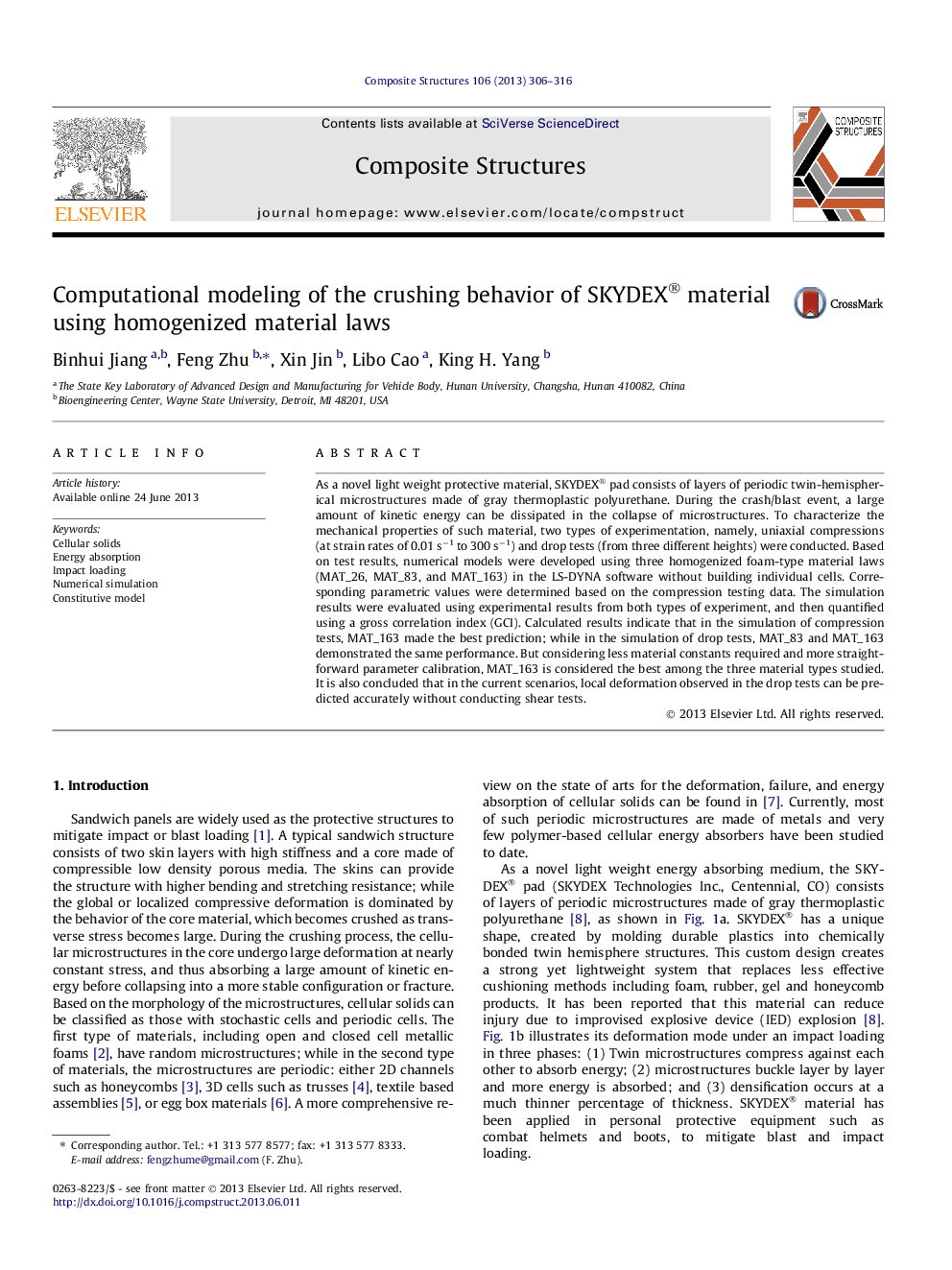| Article ID | Journal | Published Year | Pages | File Type |
|---|---|---|---|---|
| 6708904 | Composite Structures | 2013 | 11 Pages |
Abstract
As a novel light weight protective material, SKYDEX® pad consists of layers of periodic twin-hemispherical microstructures made of gray thermoplastic polyurethane. During the crash/blast event, a large amount of kinetic energy can be dissipated in the collapse of microstructures. To characterize the mechanical properties of such material, two types of experimentation, namely, uniaxial compressions (at strain rates of 0.01Â sâ1 to 300Â sâ1) and drop tests (from three different heights) were conducted. Based on test results, numerical models were developed using three homogenized foam-type material laws (MAT_26, MAT_83, and MAT_163) in the LS-DYNA software without building individual cells. Corresponding parametric values were determined based on the compression testing data. The simulation results were evaluated using experimental results from both types of experiment, and then quantified using a gross correlation index (GCI). Calculated results indicate that in the simulation of compression tests, MAT_163 made the best prediction; while in the simulation of drop tests, MAT_83 and MAT_163 demonstrated the same performance. But considering less material constants required and more straightforward parameter calibration, MAT_163 is considered the best among the three material types studied. It is also concluded that in the current scenarios, local deformation observed in the drop tests can be predicted accurately without conducting shear tests.
Related Topics
Physical Sciences and Engineering
Engineering
Civil and Structural Engineering
Authors
Binhui Jiang, Feng Zhu, Xin Jin, Libo Cao, King H. Yang,
